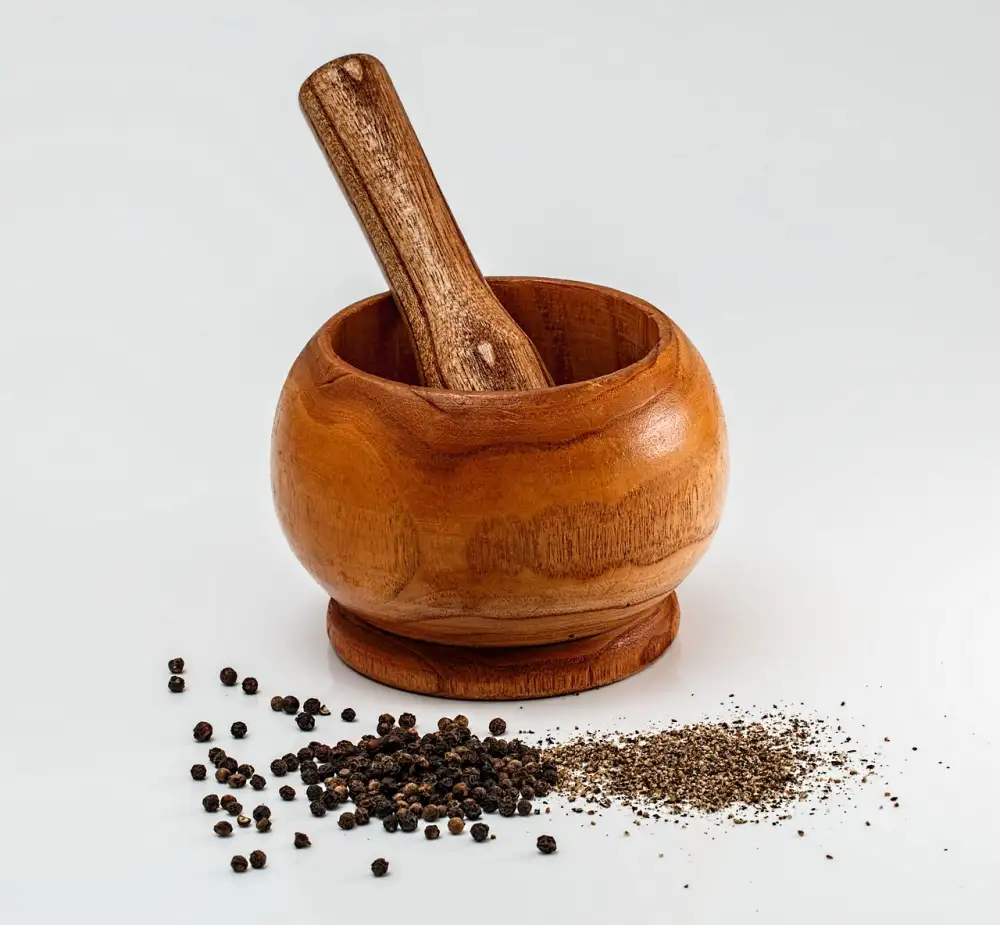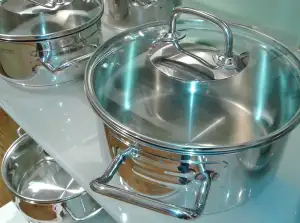Unleash the Flavors with the Mighty Mortar and Pestle: Discover the Art of Grinding and Mixing at Home

The mortar and pestle is a simple yet powerful tool that has been used for centuries in kitchens around the world. It consists of a bowl-shaped mortar and a club-shaped pestle, both made from various materials such as stone, wood, or metal. This ancient tool is designed for grinding and mixing ingredients, allowing home cooks to unleash the flavors of their dishes like never before. Whether you're crushing herbs and spices or making pastes and sauces, the mortar and pestle offers a hands-on approach to cooking that can elevate your culinary creations to new heights. So let's dive into the art of grinding and mixing with this mighty tool!
History and origins of the mortar and pestle
The mortar and pestle is a timeless tool that has been used for centuries in kitchens around the world. Its origins can be traced back to ancient civilizations such as Egypt, Greece, and Rome. In fact, the earliest evidence of its use dates back over 35,000 years ago.
The concept of grinding and mixing ingredients together using a mortar and pestle was born out of necessity. In the early days, humans relied on this simple tool to crush grains, herbs, and spices into a fine powder or paste. This allowed them to extract maximum flavor from their ingredients and create delicious dishes.
Over time, the mortar and pestle evolved into different shapes and sizes depending on the region and culture. For example, in Asia, you will find larger mortars made from stone or granite that are used for pounding rice or making curry pastes. In contrast, European mortars tend to be smaller and made from materials like marble or porcelain.
Regardless of its form, the mortar and pestle have always played a vital role in culinary traditions worldwide. It has been an essential tool for creating traditional dishes such as guacamole in Mexico or pesto in Italy. The process of grinding ingredients by hand not only enhances the flavors but also allows for greater control over texture and consistency.
In addition to its historical significance, the mortar and pestle continue to be cherished by chefs today for its many benefits. Firstly, it provides a hands-on experience that allows cooks to connect with their food on a deeper level. Secondly, it releases essential oils from herbs and spices more effectively than using electric appliances, resulting in richer flavors.
The mortar and pestle also offer versatility in the kitchen. Apart from grinding spices or making pastes, they can be used to crush garlic cloves, mash avocados for guacamole, or even make homemade salad dressings. Their uses are limited only by one's imagination.
As we embrace modern cooking techniques and gadgets, it is important not to forget the roots of culinary traditions. The mortar and pestle serve as a reminder of our ancestors' resourcefulness and ingenuity in the kitchen. So, why not unleash the flavors with this mighty tool and discover the art of grinding and mixing at home?
Various types and materials of mortar and pestle
When it comes to mortar and pestle, there are various types and materials available to choose from. The most common type is the traditional stone mortar and pestle, which is made from granite or marble. These materials are known for their durability and ability to withstand heavy grinding.
Another popular option is the ceramic mortar and pestle, which is lighter in weight compared to stone. Ceramic mortars are often glazed, making them easy to clean and maintain. They also come in a variety of colors and designs, adding a touch of style to your kitchen.
For those who prefer a more modern look, there are stainless steel mortars available. These are great for grinding spices and herbs as they do not absorb flavors or odors. Stainless steel mortars are also dishwasher safe, making them convenient to use.
Wooden mortars and pestles are another option, although they may not be as commonly used as the others. They can add a rustic charm to your kitchen but require more care in terms of cleaning and maintenance.
Ultimately, the choice of material depends on personal preference and the specific needs of your cooking style. Whether you opt for the traditional stone mortar or a more contemporary stainless steel one, each material has its own unique qualities that can enhance your culinary experience.
Benefits of using a mortar and pestle in cooking
Using a mortar and pestle in cooking offers numerous benefits. Firstly, it allows you to unleash the full flavors of your ingredients. By grinding them manually, you release essential oils and aromas that would otherwise be lost with electric appliances. This results in more intense and vibrant flavors in your dishes.
Secondly, the mortar and pestle give you control over the texture of your ingredients. You can easily adjust the coarseness or fineness of your grind, allowing for greater versatility in recipes. Whether you want a smooth paste or a chunky salsa, the mortar and pestle can deliver.
Furthermore, using a mortar and pestle is a great way to connect with your food on a deeper level. The hands-on approach allows you to engage all your senses – feeling the texture, smelling the aromas, and hearing the sounds of grinding. It creates a more intimate cooking experience that enhances your connection with the ingredients.
In addition to these sensory benefits, using a mortar and pestle also promotes healthier cooking. Unlike processed ingredients or pre-ground spices, grinding fresh herbs and spices ensures that they retain their nutritional value. It also eliminates the need for preservatives or additives commonly found in store-bought ground products.
Lastly, using a mortar and pestle adds an element of tradition and authenticity to your cooking. It harkens back to ancient culinary practices where this tool was used extensively. Incorporating this timeless technique into modern kitchens not only honors our culinary heritage but also adds an artisanal touch to our meals.
In conclusion, using a mortar and pestle in cooking provides numerous benefits such as enhancing flavors, controlling textures, fostering a deeper connection with food, promoting healthier cooking, and adding tradition to modern kitchens. Embracing this age-old tool can truly elevate your culinary creations to new heights.
Traditional and innovative uses of the mortar and pestle
The mortar and pestle is not only a tool for grinding and mixing ingredients, but it also opens up a world of traditional and innovative culinary possibilities. In traditional cooking, the mortar and pestle are used to create spice blends, such as curry pastes or garam masala. The process of pounding the spices releases their essential oils, resulting in a more intense flavor profile. Additionally, herbs like basil or cilantro can be crushed into a paste to make vibrant sauces or dressings.
Innovative chefs have taken the use of the mortar and pestle to new heights by experimenting with unconventional ingredients. For example, roasted nuts can be ground into a smooth nut butter or used as a crust for meats or fish. Fresh fruits like berries or citrus can be mashed to create flavorful spreads for toast or toppings for desserts. Even coffee beans can be ground in a mortar and pestle to create a unique coffee experience.
The mortar and pestle also play a crucial role in making homemade condiments like mayonnaise or aioli. By grinding garlic with salt into a paste before incorporating it into these sauces, you ensure that every bite is bursting with flavor.
Furthermore, the mortar and pestle are invaluable when it comes to making cocktails. Muddling fresh herbs, fruits, or even spices like cinnamon can release their flavors directly into your drink, taking it to another level.
Whether you're exploring traditional recipes or pushing culinary boundaries with innovative creations, the mortar and pestle offer endless possibilities for enhancing flavors in your cooking.
Tips for choosing and caring for a mortar and pestle
When choosing a mortar and pestle, there are a few factors to consider. Firstly, think about the material. Granite is a popular choice as it is durable and has a rough surface that aids in grinding. Marble is another option, known for its elegance and smoothness. Ceramic mortars are lightweight and suitable for grinding small quantities.
Size matters too. Consider the amount of ingredients you usually work with and choose a size accordingly. A larger mortar allows for more efficient grinding but may be cumbersome to handle.
Caring for your mortar and pestle is essential to ensure its longevity. After use, wash it with warm water and mild soap, avoiding harsh chemicals that can damage the material. Avoid using abrasive scrubbers or brushes as they can scratch the surface.
To remove stubborn stains or odors, create a paste using baking soda and water, gently scrubbing the mortar with a soft cloth or sponge. Rinse thoroughly before drying.
It's also important to season your new mortar and pestle before use. Grind some rice or salt in it until the residue appears clean. This process helps remove any impurities from the manufacturing process.
Lastly, store your mortar and pestle in a cool, dry place to prevent moisture buildup that could lead to mold or damage over time.
By following these tips, you can ensure that your mortar and pestle remains in excellent condition, ready to unleash flavors in your culinary creations for years to come.
In conclusion, the mortar and pestle is a timeless tool that has been used for centuries to grind and mix ingredients in the kitchen. Its simplicity and versatility make it a must-have for any aspiring chef or home cook. Whether you are crushing spices, making pastes, or creating unique flavor combinations, the mortar and pestle allows you to unleash the true essence of your ingredients. So why not embrace this ancient tool and bring a touch of tradition and authenticity into your modern kitchen? With its ability to enhance flavors and elevate your culinary creations, the mortar and pestle is truly an indispensable companion for any food enthusiast.
Published: 21. 12. 2023
Category: Home



